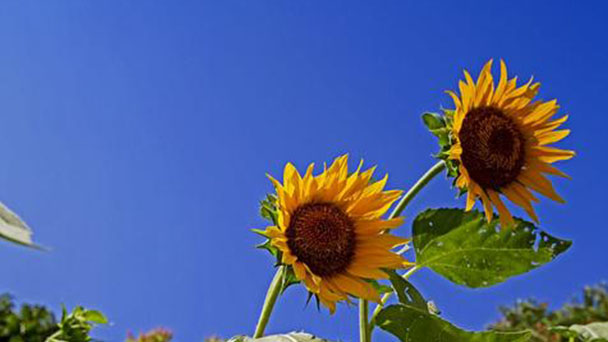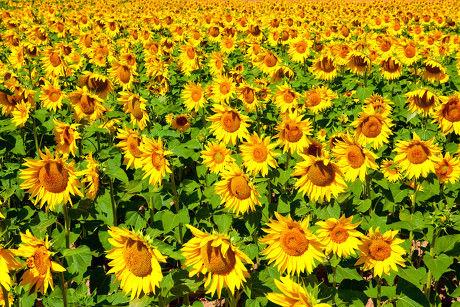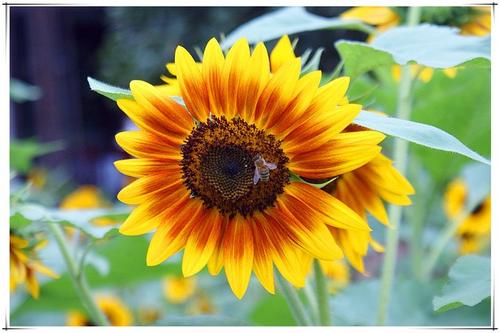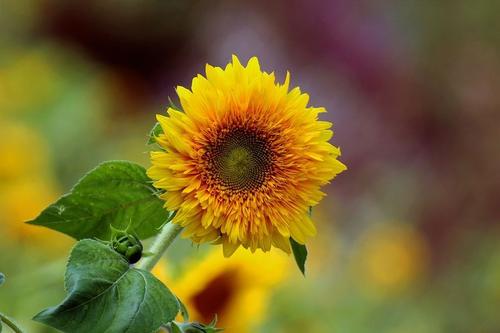How to grow and care for Sunflowers
Written by Maggie
Jan 09 2021

Sunflowers are very common in our life. Today we'll take about growing Sunflowers and Sunflowers care when growing it.

Growing Sunflowers
1. Land selection and preparation: Growing Sunflowers should choose land level off, medium fertility, convenient irrigation and drainage, relatively small soil viscosity, and should not be repeated. To seed reproduction, sowing with peat soil is appropriate. Before sowing, dressing seeds with high fat film can drive away underground pests, isolate virus infection and improve seed germination rate.
2. Sowing at the right time: The sowing time of Sunflowers is generally from March to April, and the suitable temperature for sowing is 18-25 ℃. Usually, the buds come out about 5-7 days after sowing. The basic principle of sowing date selection is to sow early or late according to the law of saline-alkali occurrence, so that seedlings can avoid the harm of saline-alkali. Sow in spring or summer according to the growth period of the variety.
3. Field check and planting: Sunflowers is a dicotyledonous crop, and it is difficult to produce seedlings from top soil. In addition, soil preparation, poor sowing quality, hardening of surface soil after sowing, or diseases, insects, rats, finches, etc., are easy to cause lack of seedlings and ridges. In order to ensure a seeding seedlings, it must be in the seedling stage by field by line inspection, the lack of seedlings in a row to be timely replanting.
4. Thinning and seedings: Sunflowers Should be thinned as early as possible to prevent seedlings from crowding, which will affect the cultivation of strong seedlings and even the yield in the future. As for saline-alkali land and plots with heavy insect pests, the seeding time can be appropriately postponed. At the same time, Sunflowers should also seed as early as possible, which is conducive to the cultivation of strong seedlings and the development of flower disc. Seedling should be carried out at 2 pairs of true leaves.
5. Hoe weeding: Sunflowers row commonly 2 ~ 3 times weeding scarification, dispel harden, protect water points, reduce evaporation, reduce salinity harm, and so on, the first row in 1 ~ 2 to leaf to combine thinning singling, second row 1 week after singling, 3rd row in front of the sealing ridge combined with open ditch, ridging, applying fertilizer.
6. Ditch topdressing: Sunflowers prefer fertilizer. Ditch topdressing is usually carried out during the third intertillage, with nitrogen and phosphate fertilizer as the main fertilizer, 5 kg diammonium phosphate and 10 kg urea per acre. Furrowing soil can effectively ensure the growth and development of secondary roots, prevent lodging, and reduce the base branching below the cotyledon node.
7. Timely irrigation: Sunflowers irrigation adopts trench irrigation. Generally, for varieties with a plant height of 1.5 meters, the first water should be carried out at the bud stage, the second water should be carried out at the initial flowering stage, and the third water should be carried out at the grain-filling stage. For cultivars with a plant height of about 2 meters, the first water was carried out 4 ~ 5 days before flowering (irrigation was advanced due to severe drought), the second water was carried out 6 ~ 7 days after the first water, and the third water was carried out at the grain-filling stage.
8. Pollination management: Sunflowers have low self-pollination and high cross-pollination. Artificial assisted pollination should be carried out in time during cultivation, such as pollination by means of pair disk, powder puff, cotton thread gloves, etc., or collect pollen from the male parent and gently smear it on the stigma of the female parent with a small brush.

Sunflowers care
Seedlings can be used in a hole tray and furthermore, of substrate available peat, vermiculite and sand carried out in accordance with the 2:1 proportion ratio, and can be mixed with a little organic fertilizer. Sunflowers in potted plants have small seeds and relatively weak topsoil ability, so it is not easy to sow too deep, usually about 1cm. After sowing soil, light repression, such as seedling in winter and spring, and it can be covered with film insulation, shortens the emergence time. Keep the soil moist after sowing. Seedlings emerge in 3 to 5 days in summer and 5 to 10 days in winter and spring.
Transplanting as early as possible can shorten the slow seedling time and prevent the emergence of "tall shoots". Sunflowers can be transplanted when 1 pair of true leaves have been produced. Two weeks after planting, Sunflowers seedlings will have strong roots. Sunflowers seedlings have a strong root system, which is the basis of high transplanting survival rate.
After colonization, water should be properly controlled to prevent barren growth. Now after the bud, according to the plant growth situation appropriate watering, in order to meet its growth needs. It is not recommended to apply bottom fertilizer, so as not to make the stem too thick because the fertility is too sufficient. Top dressing or foliar spray fertilizer can be used according to the growth of the plant.
The incidence of diseases and insect pests of Sunflowers was low, and the main diseases were bacterial leaf spot, rust, stem rot, powdery mildew and black spot. Insect pest mainly is aphid, blind bug, red spider and beetle.
Sunflowers care in flowering period
1. Ensure adequate supply of water and fertilizer
From budding to flowering, this period is an important period of Sunflowers' life. During this period, the plant needs 60% of the water for the whole growing period, and if water is not enough, seeds will not develop properly. Therefore, during this period, to ensure adequate water supply, combined with watering appropriate fertilization, weekly application of urea plus diammonium.
2. Implement artificial assisted pollination
If the family is growing ornamental sunflowers, you can omit this step. In natural conditions, sunflowers depend on insects such as bees for pollination. Sunflowers grown in the home can be artificially assisted pollination to increase their pollination rate. Make a powder puff with cotton cloth, carton, cotton wool (makeup with the shape of the powder puff can be directly used, but the volume is small and pollination is more trouble). Prepare the pollen in advance, sprinkle it on the pollinator and gently press it onto the tray. Pollination time is selected at 9 to 12 o 'clock, when the dew has just receded and the pollen is more. Pollination usually takes two or three cycles.
3. Carry out prevention and control of Sunflowers borers
Sunflowers attract many insects, mainly the sunflower borer. The sunflower borer feeds on sunflowers seeds and forms crisscrossing tracks in the flower disc. The flower plate will rot on a rainy day. Sunflowers bloom during the active period of the sunflower borer, dormant during the day and active at night. We can use talcum powder diluted into dust agents for spraying, 2~3 days once.

Latest Updated
- Benefits of Bugleweed - 7 Science-backed Health Benefits
- Bugleweed Dangers & Side Effects - Is It Poisonous?
- How to Plant Evergreen Trees - What You Should Know
- When to Plant Evergreens - Grow Guide for Evergreen Trees
- 12 Wonderful Evergreen Shrubs for Your Garden
- 12 Popular Evergreen Plants with Pictures for Beginners
- When And How To Prune A Lilac Bush Like a Pro
- How to Grow & Care for Lilac Vine (Hardenbergia Violacea)
- Japanese Lilac Tree (Syringa Reticulata) Care & Propagation Guide
- Shumard Oak Pros and Cons - What to Know
Popular Articles
- Winter maintenance of Antirrhinum Majus
- How to Grow Terminalia Mantaly Tree
- How to Grow and Care for Crossostephium Chinense
- How to grow Antirrhinum Majus in spring
- Peristeria Elata (Dove Orchid) Profile: Info & Care Guide
- Underwatered Snake Plant (Sansevieria Trifasciata) - Signs And How To Fix
- How to Care for Brazilian Jasmine Plant (Mandevilla Sanderi)
- How to Grow & Care for Graptopetalum Purple Delight in Summer
- Rosa Chinensis (China Rose): Plant Growing & Care Tips
- How to Care for Baby Sun Rose (Aptenia Cordifolia)